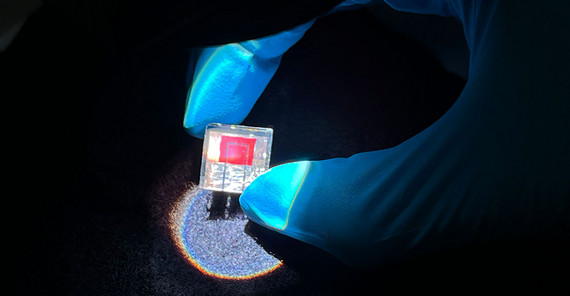
Researchers from the University of Potsdam in Germany and the Chinese Academy of Sciences claim to have achieved a record-breaking power conversion efficiency of 25.7% for a tandem solar cell based on a wide-bandgap perovskite bottom cell and a narrow-bandgap organic top device.
The scientists stressed that using an organic cell as a bottom device offers the advantage in terms of low carbon footprint compared to cell technologies based on crystalline silicon or copper, indium, gallium and selenium (CIGS) thin-film, which require high processing temperatures.
“Perovskite and organic solar cells are both processed at low temperatures,” the group stated.
It synthesized a novel red/infrared absorbing organic solar cell that reportedly extends its absorption even further into the infrared. “Still, tandem solar cells were limited by the perovskite layer, which shows strong efficiency losses if adjusted to absorb only blue/green parts of the sun spectrum,” the academics explained. “To tackle this, we utilized a novel passivation layer applied to the perovskite that reduces material defects and improves the performance of the whole cell.”
The scientists built the tandem cell with a substrate made of glass, a transparent-conductive-oxide (TCO) recombination layer integrating a self-assembled monolayer, a perovskite absorber with an energy bandgap of 1.88 eV, the novel passivation layer, an interconnecting layer (ICL), an organic absorber with an energy bandgap of 1.27 eV, a PDINN, which is a cathode interlayer aimed to improve the interface between the active layer and the top electrode, and a silver (Ag) electrode.
They also used cyclohexane 1,4-diammonium diiodide (CyDAI2) as a surface passivator. This compound naturally contains two isomeric structures with ammonium groups on the same or opposite sides of the hexane ring and the two isomers demonstrate completely different surface interaction behaviors,” they explained, noting that this helps reduce the quasi-Fermi-level splitting open circuit voltage mismatch of the perovskite cell.
Tested under standard illumination conditions, the tandem cell was found to achieve a power conversion efficiency of 26.4% and a certified efficiency of 25.7%. The result currently represents a world record for this cell technology.
The novel cell concept was introduced in the paper “Isomeric diammonium passivation for perovskite–organic tandem solar cells,” published in nature.